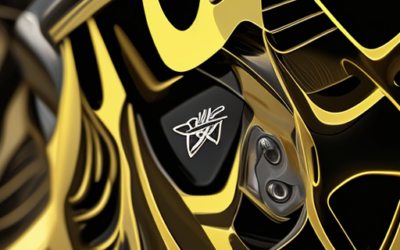The Ultimate Guide to Tire and Wheel Sets for Your Vehicle

1. Introduction
Welcome to our ultimate guide on tire and wheel sets! Whether you’re looking to upgrade your vehicle’s performance or simply want to improve its appearance, choosing the right tire and wheel set is crucial. In this guide, we’ll cover everything you need to know about tire and wheel sets, from types and selection factors to installation and maintenance. So let’s get started!

2. Types of Tire and Wheel Sets
There are several types of tire and wheel sets available on the market, each designed to suit different needs and preferences. Here are some of the most common types of tire and wheel sets:
1. All-Season Tires: These tires are designed to provide good performance in various weather conditions, including rain, snow, and dry roads. They have a balanced tread pattern that provides good grip and handling in all seasons.
2. Summer Tires: These tires are specifically designed for warm weather conditions and provide excellent traction and handling on dry and warm roads. They have a lower profile and are typically lighter than all-season tires.
3. Winter Tires: These tires are designed to provide better grip and control on ice and snow. They have a deeper tread pattern and are made with special compounds that remain flexible at low temperatures.
4. Off-Road Tires: These tires are designed for off-road use and provide excellent traction on rough terrain. They have a deeper tread pattern and are made with durable materials that can handle rocks and other obstacles.
5. High-Performance Tires: These tires are designed for high-speed driving and provide excellent grip and handling on both wet and dry roads. They often have a sticky rubber compound and a unique tread pattern that reduces drag and improves overall performance.
6. Light Truck Tires: These tires are designed for heavier vehicles such as pickups and SUVs. They have a stronger construction and are built to handle heavy loads and off-road terrain.
7. Motorcycle Tires: These tires are designed for motorcycles and scooters and come in various sizes and styles to fit different types of bikes and riding styles.
8. ATV Tires: These tires are designed for all-terrain vehicles (ATVs) and provide excellent traction on muddy, rocky, and uneven terrain.
9. Racing Tires: These tires are designed for high-performance racing and provide excellent grip and handling on track days. They often have a sticky rubber compound and a unique tread pattern that reduces drag and improves overall performance.

3. Choosing the Right Tire and Wheel Set for Your Vehicle
When it comes to choosing the right tire and wheel set for your vehicle, there are several factors to consider. Firstly, you need to determine the size of your wheels. This can usually be found on the tire information placard on the driver’s side door jamb or in the owner’s manual. Next, you need to decide on the type of tire you want. There are three main types of tires: all-season, summer, and winter. All-season tires are a good choice for most vehicles as they provide good traction and handling in a variety of weather conditions. Summer tires are designed for warmer temperatures and offer better performance and handling. Winter tires are specifically designed for cold weather and offer better traction on ice and snow. Finally, you need to consider the load capacity of your vehicle. This will determine the maximum weight that the tire and wheel set can handle. It is important to choose a tire and wheel set that is suitable for your vehicle’s load capacity to ensure safe and reliable operation.

4. Factors to Consider When Selecting a Tire and Wheel Set
When selecting a tire and wheel set for your vehicle, there are several factors to consider to ensure that you get the best possible fit for your needs. Here are some key things to keep in mind:
1. Load Capacity: The first factor to consider when choosing a tire and wheel set is the load capacity. This refers to how much weight the tires can safely carry. It is important to choose tires with a load capacity that matches or exceeds the weight of your vehicle to avoid any potential safety hazards.
2. Speed Rating: Another important consideration is the speed rating of the tires. This indicates the maximum speed at which the tires can safely operate. If you plan on driving at high speeds, it is important to choose tires with a higher speed rating.
3. Tire Type: There are different types of tires available, including all-season, summer, winter, and off-road tires. Each type has its own unique features and benefits, so it is important to choose one that is suitable for your driving habits and climate.
4. Wheel Size: The size of the wheels is another important factor to consider. The size of the wheel affects the overall performance of the tire, including its speed rating and load capacity. It is important to choose wheels that are compatible with your vehicle and tires.
5. Brand Reputation: Finally, it is important to consider the reputation of the brand when selecting a tire and wheel set. Look for brands that have a good track record of producing high-quality products that are durable and reliable.

5. Installation Process
The installation process of a tire and wheel set can seem daunting at first, but with the right tools and some basic knowledge, it can be done easily and efficiently. Here are the steps involved in installing a tire and wheel set:
1. Start by removing the old tires and wheels from your vehicle. This may require the use of lug nuts wrenches or other specialized equipment.
2. Clean the mounting surface on your vehicle where the new tire and wheel will be installed. Make sure it is free of any dirt, debris or contaminants.
3. Place the new tire onto the mounting surface and align it with the wheel hub. Use the lug nuts wrench to tighten the lug nuts evenly until they are snug.
4. Next, place the new wheel onto the tire and align it with the hub. Use the lug nuts wrench to tighten the lug nuts evenly until they are snug.
5. Once the lug nuts are securely tightened, use a torque wrench to tighten them to the manufacturer’s specifications. This will ensure that the tire and wheel set is properly secured and will not come loose during operation.
6. Finally, lower the vehicle back down onto the ground and test the brakes to ensure that everything is functioning properly. If necessary, adjust the brakes to ensure that they are working correctly.
It is important to note that the installation process may vary depending on the type of vehicle you have and the specific tire and wheel set you are installing. It is always best to consult the manufacturer’s instructions and seek professional assistance if you are unsure about any aspect of the installation process.

6. Maintenance and Replacement
Regular maintenance and timely replacements are crucial when it comes to ensuring the safety and performance of your vehicle’s tires and wheels. Here are some tips on how to properly maintain and replace them:
* Regularly check the air pressure in your tires using a gauge. This should be done at least once a month or whenever the temperature changes significantly. Low tire pressure can cause uneven wear, reduced fuel efficiency, and even blowouts.
* Inspect your tires for any signs of damage, such as cuts, cracks, or bulges. If you notice any issues, have them repaired or replaced immediately. Damaged tires can lead to accidents and decreased performance.
* Check the tread depth of your tires regularly. If it’s below the minimum legal limit or if you can see the wire casing, it’s time to replace them. Uneven tread wear or bald spots can affect your vehicle’s handling and braking ability.
* Keep your wheels free from debris and dirt. Use a brush or cloth to clean them regularly, and avoid using harsh chemicals or abrasives. Dirty wheels can affect the performance of your brakes and cause corrosion.
* Have your tires rotated every 6,000 to 8,000 miles to ensure even wear. This can prevent premature replacement and extend the life of your tires.
* Replace your tires with the same size and type as the original equipment manufacturer (OEM) recommends. Using different sizes or types can affect your vehicle’s performance and safety.

7. Conclusion
In conclusion, selecting the right tire and wheel set for your vehicle is crucial for safety, performance, and style. By understanding the different types of tire and wheel sets available and considering factors such as vehicle type, driving habits, and budget, you can make an informed decision that meets your needs. It’s important to remember that proper installation and maintenance are key to getting the most out of your new tire and wheel set. With this guide, you now have all the information you need to choose the perfect tire and wheel set for your vehicle.



